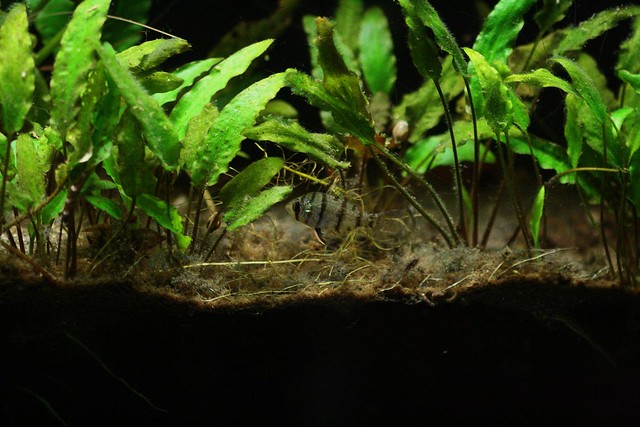 |
| Photo by scott361 |
Plants need Carbon Dioxide to grow.
Carbon dioxide (CO2) is the most important nutrient that you need to keep aquarium plants healthy. CO2 is produced by the waste products within the fish tank, like fish excrement, excess food and as a by-product of bacterial action but this is often not sufficient to keep plants in good condition.
Therefore many people utilize a system that puts CO2 into the aquarium. CO2 systems come in a variety of shapes and sizes but can be split into two simple types. Those that provide a constant source of CO2 and those that can regulate the CO2.
It is a good idea to regulate the CO2 either using the system or manually because fish will suffer if there is too much CO2 in the water. Rough guides for carbon dioxide suggest that 30 to 45 mg per liter of water is enough for plants to thrive but over 100mg per liter is too much for fish.
Plants need an adequate lighting source.
CO2 systems must be synchronized with the lighting system that you use in the aquarium. Light is a vital part of the photosynthesis process which plants use to turn light energy into chemical energy that they use to grow. Normally plants would derive the light source from the sun but in the case of aquarium plants, the sun may not be available so an artificial source is needed. The light source should provide a full spectrum of light to the plants. Popular types are mercury vapor or metal halide lights
Plants need a good substrate.
A substrate is the type of gravel or sand that you use in the fish tank. The substrate must be deep enough to allow the roots of plants to take hold and keep the plant firmly attached. You want the substrate to have a depth of about 8 cm.
Substrates can also be nutrient rich so they can help to keep the plants healthy but they must not alter the quality of the water. For example, lime based substrates will make the water harder or more alkaline. Most fish have a preference for soft or hard water if the water was to change due to the substrate the fish could become stressed or ill.
Many Aquarists use layers of a substrate to get around this problem. If a fish likes soft water then the top layer of the substrate would be a lime-free gravel. Under the lime-free gravel, a liner layer of nutrient-rich gravel could be used.
Summary.
Carbon dioxide, a good light source and a nutrient rich substrate are important components in maintaining live aquarium plants. Liquid fertilizers can also be used if you feel that the plants look in poor condition.
|

No comments:
Post a Comment